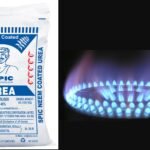What are the criticisms of the single fertilizer ‘Bharat’ brand?
Critics argue that completely commoditizing fertilizers will reduce their quality, discourage manufacturers from bringing newer and more efficient products to market because there will be less opportunity to build a unique brand identity, and reduce them to mere importers or contractors of fertilizers.
Furthermore, the government has stated goals of becoming ‘Atmanirbhar,’ or self-sufficient in fertilizers, which are currently imported in enormous quantities. Meeting these benchmarks would also encourage Indian companies to stay in business. In recent years, many private players, including the Tatas and Indo Gulf Fertilisers, have abandoned the urea market.
Many manufacturers have also expressed apprehension about spending money on a brand they do not own. ‘Once in a while, certain companies may endure the expenditure,’ an industry executive told The Hindu BusinessLine. ‘However, it will be impossible to spend continually on marketing where the brand value for that company is zero.’
Also Read | What is the logic behind the ‘One Nation, One Fertilizer’ Scheme?
Another concern is that a government brand will add another layer of regulation to the fertilizer manufacturing sector, where the government controls practically every aspect, from product price to cost structure to geographical distribution and sale.
Contextually, industry experts and economists have long advocated for greater fertilizer changes in order to lower the massive subsidy bill and preserve a nutrient balance in fertilizers including nitrogen, phosphorous, and potassium (N, P, and K), which is now skewed in favor of urea.
Fertilizer prices remained relatively stable in the 1980s and 1990s, and when they were raised, the government encountered significant opposition. In response, the urea price hike was overturned. This move, as well as the fixing of the MRP for urea on many occasions, disrupted the relative prices of various fertilizers, resulting in a large shift in favor of urea, which currently costs a fraction of the price of others such as DAP and MOP. The urea subsidy also resulted in its diversion for non-agricultural applications.
The government implemented the Nutrient Based Subsidy (NBS) system in 2010 to address the growing imbalance in fertilizer use in many states, although only non-nitrogenous fertilizers (P and K) were included, while urea was excluded. This meant that the price of urea could no longer be decontrolled. Meanwhile, the fertilizer subsidy cost continued to rise.
Also Read | ‘One Nation One Fertilizer’ will reduce logistics cost, ensure fertilizer availability.
The Chief Economic Advisor stated in the 2016 Economic Survey that the fertilizer industry is excessively regulated, causing a significant distortion in the sector. According to the Survey, the subsidy designed to support small farmers only benefits a small percentage of them ‘24% is spent on inefficient urea producers the rest, 41% is diverted to non-agricultural uses and abroad; of the remaining, 24% is consumed by larger—presumably richer — farmers.’
Experts thus advocate for Direct Benefit Transfer (DBT) to farmers and decontrolling fertilizer prices, so that the system empowers farmers by providing a variety of options and drives manufacturers to produce better products. All of this in turn would help cut the subsidy bill, they claim.
While the government has tested DBT in fertilizers on a trial basis, the government’s enormous subsidy targets stated till 2026 do not appear to foreshadow a full-fledged adoption of the DBT system anytime soon.















Add Comment